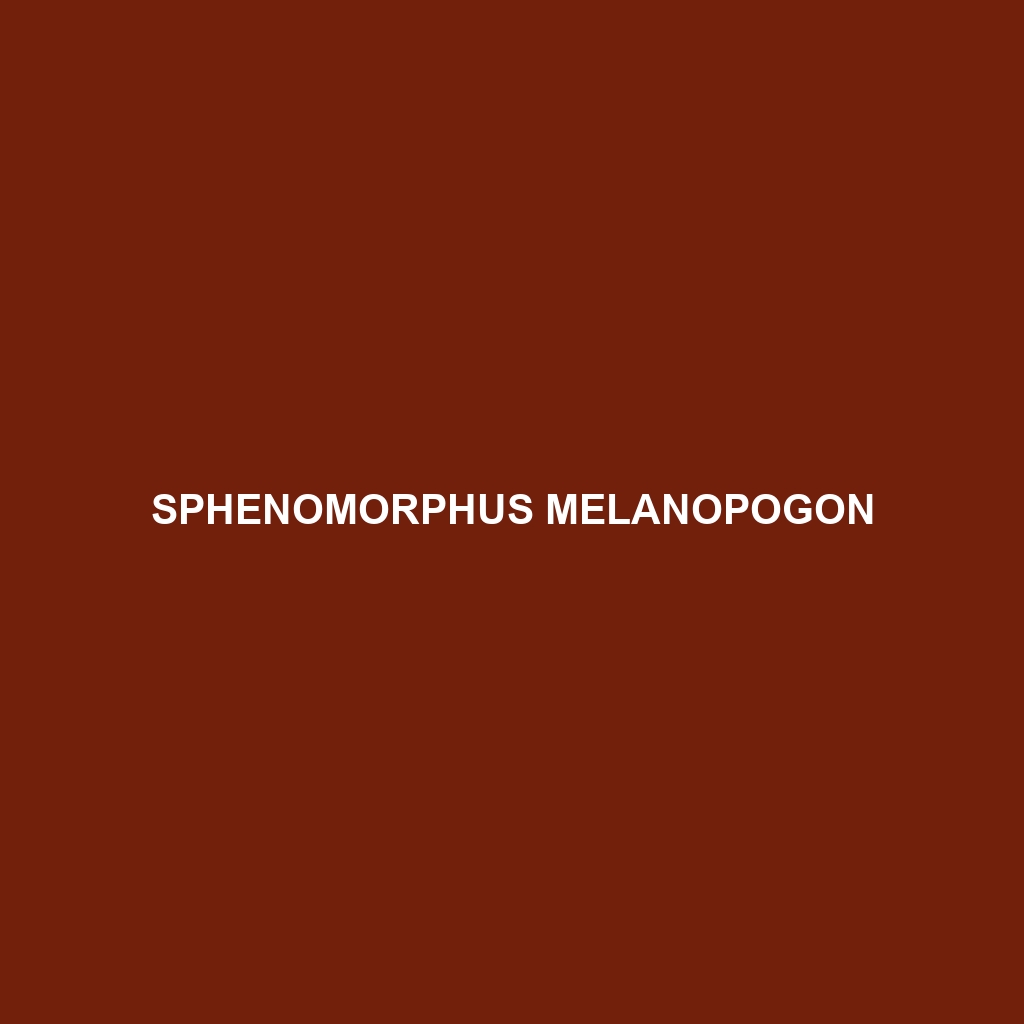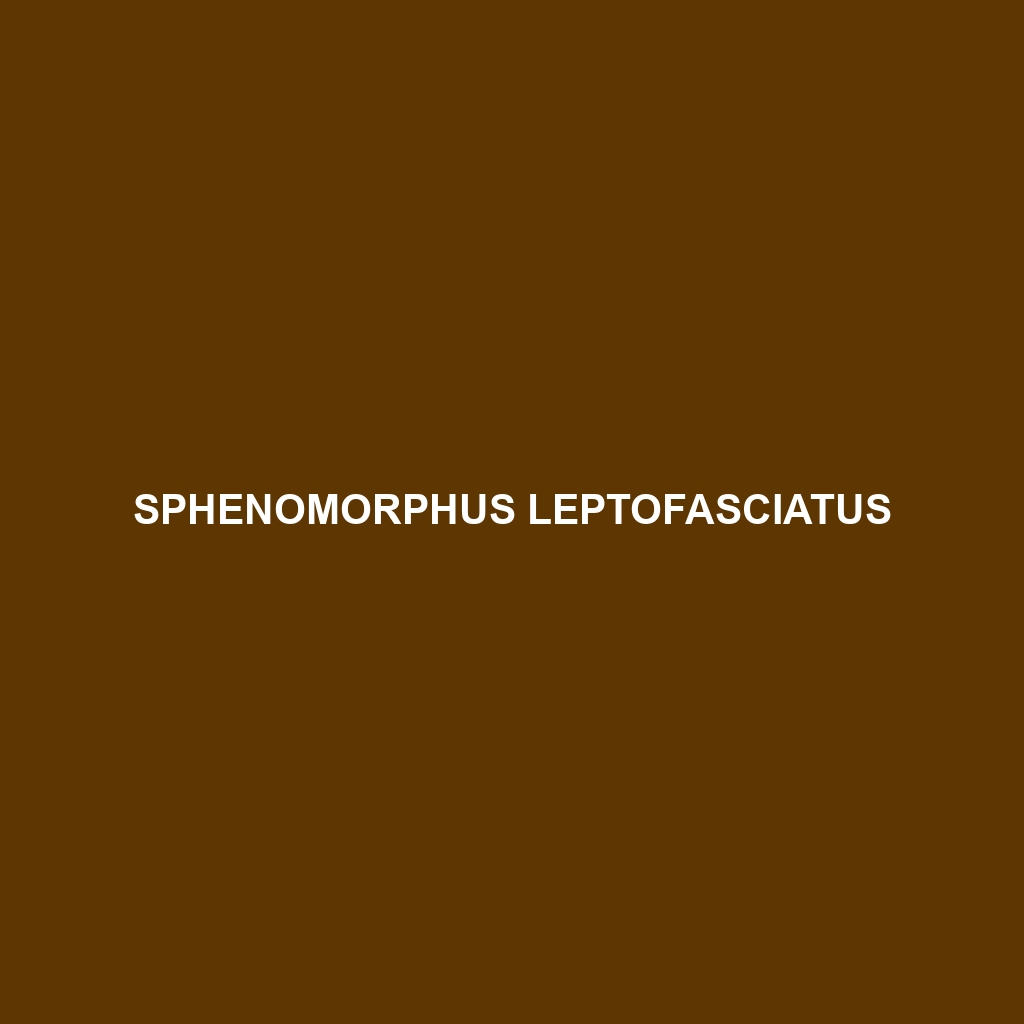<b>Sphenomorphus minutus</b>, commonly known as the minute skink, is a small insectivorous lizard measuring 10-15 cm, found in tropical and subtropical rainforests of Southeast Asia. This diurnal species exhibits a streamlined body, regenerates its tail, and plays a crucial role in its ecosystem by regulating insect populations and contributing to soil health.
Tag: Southeast Asia reptiles
Sphenomorphus meyeri
Discover the Meyer's Skink (Sphenomorphus meyeri), a sleek, agile reptile native to Southeast Asia's moist forests, reaching lengths of 15 to 25 cm. With a diet primarily consisting of insects, this resilient species exhibits remarkable camouflage and tail regeneration, playing a vital role in pest control and the ecosystem's balance.
Sphenomorphus melanopogon
<b>Sphenomorphus melanopogon</b>, known as the Black-bearded sphenomorphus, inhabits the humid tropical forests of Southeast Asia, thriving in rainforests and savannas. This slender, agile reptile exhibits cryptic coloration and robust climbing abilities, primarily feeding on insects while playing a vital role in maintaining ecosystem balance.
Sphenomorphus maindroni
<b>Sphenomorphus maindroni</b>, commonly known as Maindron's skink, is a medium-sized, diurnal insectivore found in the tropical rainforests of Southeast Asia, characterized by its smooth, shiny scales and distinctive bright blue tongue. This skink plays a crucial role in controlling insect populations and serves as an important prey species in its ecosystem.
Sphenomorphus maculatus
<p><b>Sphenomorphus maculatus</b>, also known as the spotted skink, is a slender, 10-15 cm long reptile found in tropical rainforests of Southeast Asia, characterized by its brown or gray body adorned with dark spots. As an insectivore, it plays a vital role in maintaining ecological balance while showcasing unique behaviors, including noteworthy climbing abilities and a diurnal lifestyle.</p>
Sphenomorphus longicaudatus
<b>Sphenomorphus longicaudatus</b>, commonly known as the long-tailed skink, is a diurnal insectivore found in humid, well-vegetated habitats across Southeast Asia. Recognizable by its elongated body and tail, this species exhibits remarkable agility and camouflage, playing a vital role in pest control and as a prey species within its ecosystem.
Sphenomorphus lineopunctulatus
Discover the striking Sphenomorphus lineopunctulatus, or striped skink, a small and agile lizard native to the rainforests of Southeast Asia. With its unique blend of brown and green hues, fine horizontal stripes, and insectivorous diet, this species plays a vital role in pest control and supports biodiversity in its habitat.
Sphenomorphus leptofasciatus
Sphenomorphus leptofasciatus, commonly known as the striped skink, is a vibrant greenish-brown reptile found in the rainforests of Southeast Asia, characterized by its distinct longitudinal stripes and a streamlined body measuring 10 to 15 cm in length. This diurnal insectivore plays a vital role in its ecosystem by controlling insect populations and serves as prey for larger predators, making it essential for maintaining ecological balance.
Sphenomorphus latifasciatus
<b>Sphenomorphus latifasciatus</b>, commonly known as the broad-banded skink, is a vibrant insectivorous species native to Southeast Asia's tropical rainforests, recognized for its sleek body, striking coloration, and agile movements. Measuring 10 to 15 cm in length, this skink plays a crucial ecological role by regulating insect populations and serving as prey for various predators.
Sphenomorphus indicus
The Indian skink (<i>Sphenomorphus indicus</i>) is a medium-sized lizard ranging from 15 to 30 cm, known for its slender body, smooth scales, and impressive camouflage abilities. Found in diverse habitats across Southeast Asia and the Indian subcontinent, it plays a crucial ecological role as an insectivore and contributes to soil aeration through its burrowing behavior.









